Menus
- Seven enduro bikes in Sweden
- Comparison test of travel enduro bikes, part 2
- BMW R 1200 GS
- Ducati Multistrada 1200 S.
- Honda Varadero 1000
- KTM 990 Adventure
- Moto Guzzi Stelvio 1200 NTX
- Triumph Tiger SE
- Yamaha XT 1200 Z Super Tenere
- MOTORCYCLE measurements
- Conclusion
- Rating
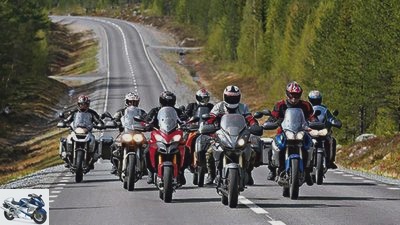
Jahn

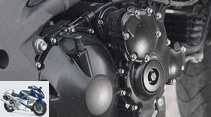
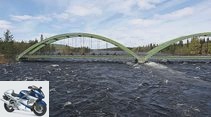
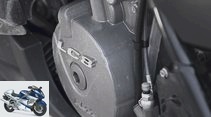
28 photos
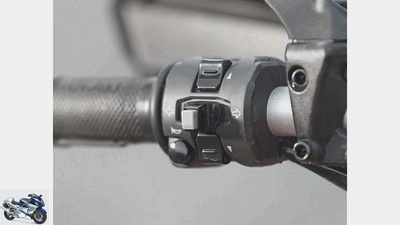
Jahn
1/28
The operation of the Multistrada has also changed: a control center for electronics and motor directly on the handlebars.
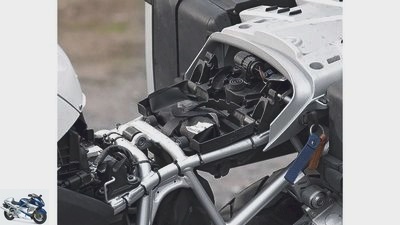
Jahn
2/28
One reason for the convincing appearance of the GS: the stable technology.
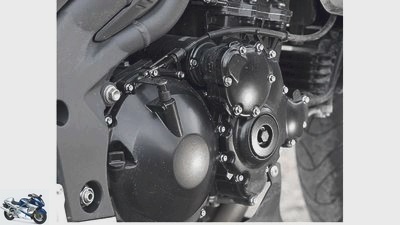
Jahn
3/28
But the three-cylinder concept of the Tiger is simply impressive.
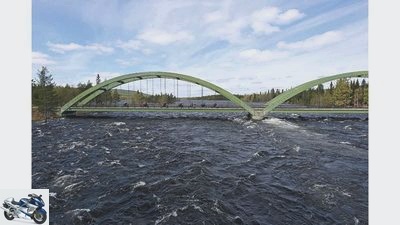
Jahn
4/28
Rivers, forests, lakes and hardly any people – Sweden means vast nature.
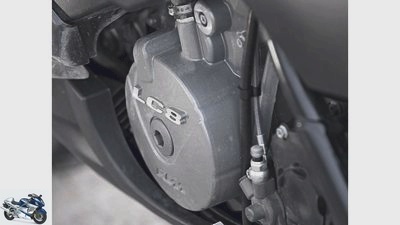
Jahn
5/28
The lively engine of the 990 Adventure also contributes to this.
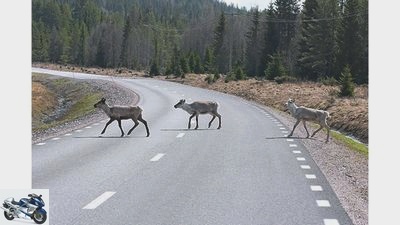
Jahn
6/28
Unfortunately, you also meet them very often on the streets, so be careful!

Jahn
7/28
Fishing is one of the central elements in Scandinavia.
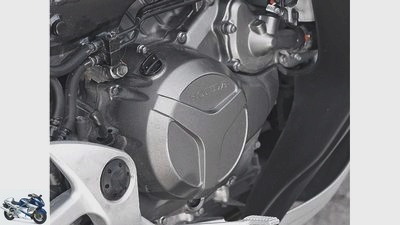
Jahn
8/28
The main thing about the engine of the Varadero is its smoothness.
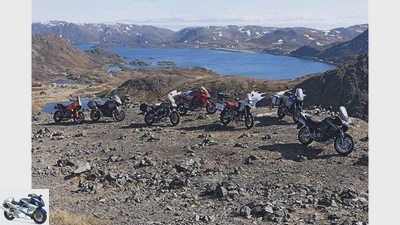
Jahn
9/28
The Scandinavian landscape is made for travel enduro bikes.
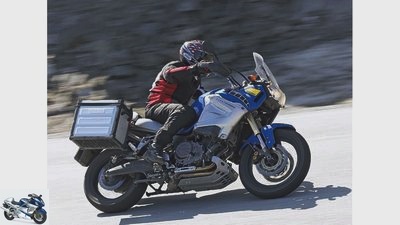
Jahn
10/28
Also a big name in the travel enduro scene. The Yamaha XT 1200 Z Super Tenere.
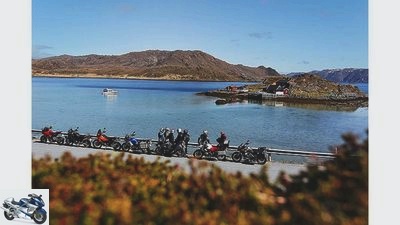
Jahn
11/28
But the landscape in northern Sweden is still at its best.
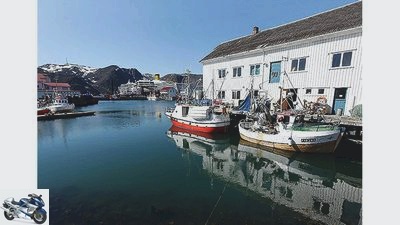
Jahn
12/28
Wonderful blue water of the harbor in the far north of Sweden. But it could be a little too cold for bathing.
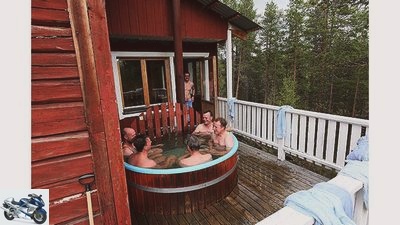
Jahn
13/28
And with a hot bath you can recover from the exertion.
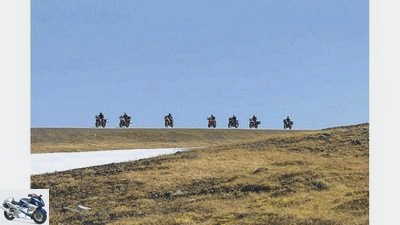
Jahn
14/28
At the beginning of June – winter is still fighting back with all its might.
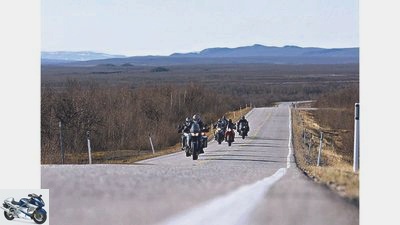
Jahn
15/28
Travel in the vastness of Lapland.
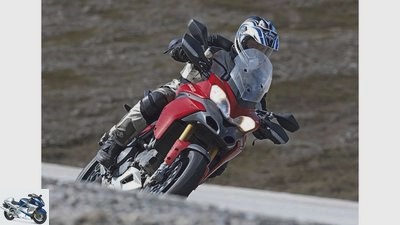
Jahn
16/28
The Ducati Multistrada 1200 S is one of the newest bikes in the field.
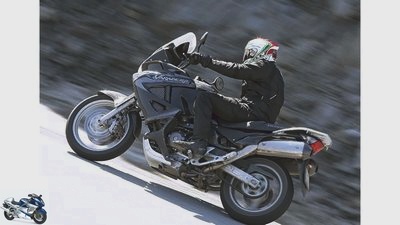
Jahn
17/28
The Honda Varadero seems a little reserved behind all its plastic.
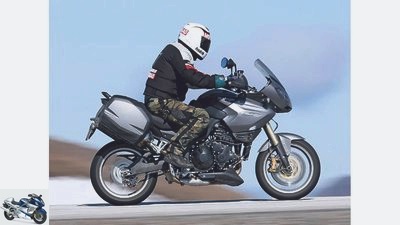
Jahn
18/28
While the Triumph scores with its engine, the chain in need of care immediately catches the eye.
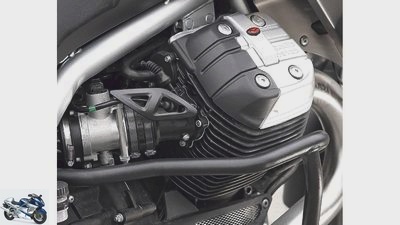
Jahn
19/28
Not quite as typical Guzzi: the 90-degree V2 engine.

Jahn
20/28
Something you also come across frequently: reindeer.
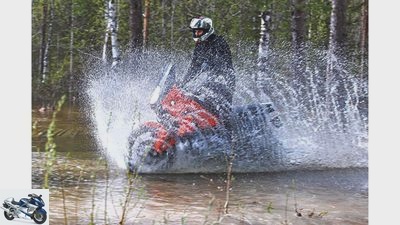
Jahn
21/28
The KTM has the best off-road qualities – it is made for adventure land.
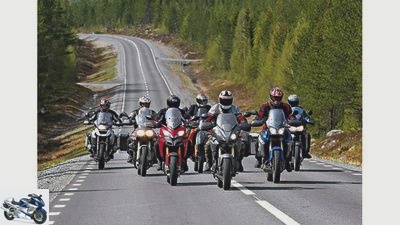
Jahn
22/28
Seven of the latest travel enduros are put through their paces on the journey from Stockholm to the North Cape. Here are the impressions of the travel test.
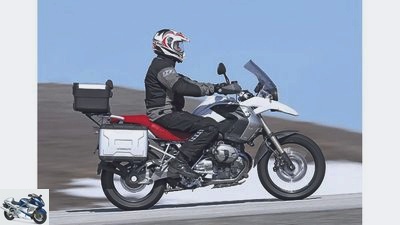
Jahn
23/28
The enduro with the longest tradition: BMW invented the travel enduro 30 years ago. Even today, the R 1200 GS is the measure of all things.
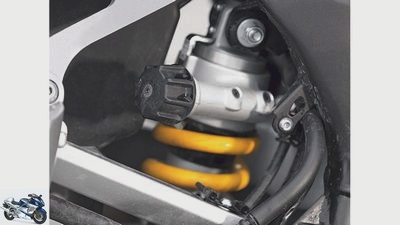
Jahn
24/28
The indicator for the spring preload is one of the many clever details of the Super Tenere.
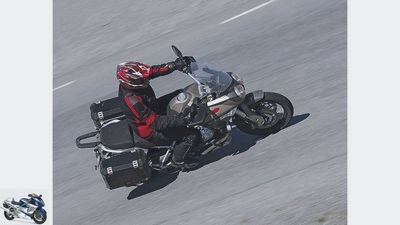
Jahn
25/28
The Moto Guzzi Stelvio, it combines tradition with a sense of the new.
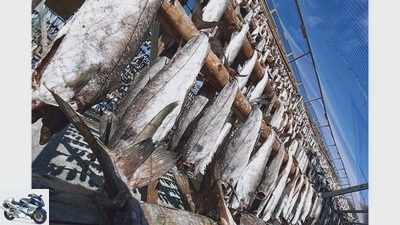
Jahn
26/28
And fish one of the most popular foods.
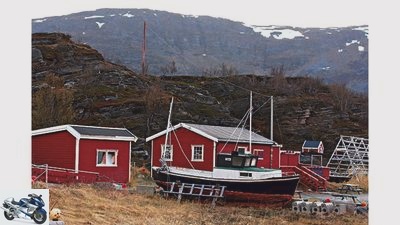
Jahn
27/28
Where in this country the residents in rural areas have their car or motorcycle in front of the door, many in Sweden have their boat.
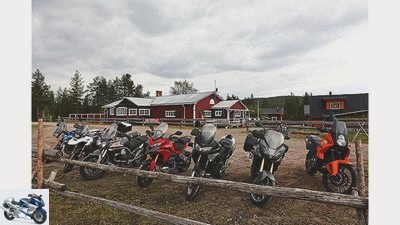
Jahn
28/28
For relaxation, a detour to the rustic hotel in Galivare on the Arctic Circle is worthwhile.
Comparison test: travel enduros
Seven enduro bikes in Sweden
There is a spirit of optimism among the travel enduros: the BMW has been revised, Ducati and Yamaha have been completely redesigned. But how good are the new ones? How mature is the touring establishment? MOTORRAD was looking for the path to enlightenment – on a pilgrimage to the midnight sun. In the first part: engine and chassis. In Part 2 (MOTORRAD 15/2010): Everyday life, safety and costs.
Nordkap 1500. The signpost in front of a hotel in the provincial town of Vilhelmina looks like an imaginary hand that brings us back from our dream world to reality with a powerful slap in the face. The daily kilometer already shows over 700 kilometers. How often do we have to refuel? How many hours are there left in the saddle? You don’t even want to extrapolate it. What was that again? Stockholm-North Cape and back was suggested by Fredrik Lundgren, colleague at MOTORRAD’s Swedish sister magazine. And we all loved it. Pepe from Spain, Federico from Italy, Matthijs from Holland, Fredrik’s colleague Axel, Jorg and Peter from Germany. We were still there when Fredrik sent the schedule. 4000 kilometers in five days. Well, a trip to Scandinavia has never been something for wimps. And the occasion was also a special one.
Buy complete article
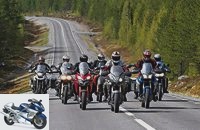
Comparison test: travel enduros
Seven enduro bikes in Sweden
Yamaha Super Tenere. Drawn from scratch.
With a 1200 series twin cylinder, cardan drive, traction control – the technical effort reflects the commitment of the famous name. In comparison, the rest of the quartet are old friends. Especially the Honda Varadero, which has hardly been revised since 2003. A travel classic. KTM 990 Adventure, the Austrian alternative to the tourist class. Obviously rally-inspired. Moto Guzzi Stelvio, on this tour in the adventure version, the NTX version (crash bars, additional headlights, hand protectors, engine protection, aluminum case, spoked wheels). The Triumph Tiger SE. The legendary three-cylinder in a travel outfit. As an SE (special edition), the British competitor comes with ABS, suitcases and handcuffs.
Jahn
At the beginning of June – winter is still fighting back with all its might.
And who is missing? No. Buell (Ulysses) was recently carried to the grave with tears, Moto Morini (Granpasso) is on his deathbed. Suzuki (V-Strom) only has the 650 series in its range, Kawasaki is traditionally averse to the subject of travel enduro.
The place name sign for Vilhelmina disappears in the rearview mirror. The endless birch and coniferous forest has us again. And the mostly dead straight streets. Fredrik already knew why he asked us to check the motorcycles in advance on MOTORRAD’s top test course. Criteria that are so important at home, such as handling, lean angle or steering behavior, are rather secondary in the Swedish expanse. At least most.
As if strung on a string of pearls, our series of seven stretches along the longest connecting road in Sweden, the E 45, the so-called Inlandsvagen, which runs from Gothenburg to the Finnish border in Karesuando. Small farmsteads rarely interrupt the steady pace of 110. Time to think about the basics. Obviously, with less than one liter of displacement, you can no longer make a state in the travel enduro segment. Only the Honda and the KTM are satisfied with this lower limit, the Triumph is only slightly above with 1050 cm³. The rest of the field climbs up, starting with the Guzzi (1151 cm³) via the BMW (1170 cm³) up to 1200 cm³ displacement (Ducati and Yamaha).
Not because of top performance, it is rarely needed here – and mostly probably elsewhere in the world as well. Above all, however, large displacement promises a lot of torque, powerful pulling power and decisive acceleration – clearly central properties for travel enduros. And that’s exactly why they decided on top performance. Apart from the Varadero with 94 PS, the tour group commutes around the 110 PS mark. Exception: the Multistrada. The Ducati engine presses no less than 147 hp on the role of the MOTORRAD dynamometer. A record in the tourism industry.
Jahn
Where in this country the residents in rural areas have their car or motorcycle in front of the door, many in Sweden have their boat.
And – we remember the top test course – this paper form confirms the Multistrada in real life. There is hardly more experience than on the Italian. From 3000 tours, the engine derived from the Superbike 1198 pushes forward with a power that is unparalleled in this segment. No sudden burst of power, no nervous jerking in the low speed range, just pressure in all situations. As the only one of all travel enduro engines even up to the five-digit speed range. And on top of that, so easily and stress-free to use that it borders on insulting, this famous propellant in the so-called "Urban-" or "Enduro"-Mode that reduces power to 100 hp, depriving it of a third of its potency. Especially since the engine, which is also known as an L-engine after its 90-degree cylinder angle, knows how to behave properly on the tour. And thus ultimately achieves a balancing act that was previously barely feasible between an aggressive, powerful fun bike drive and a cultivated touring motor. Not to be forgotten: in the acceleration, the Italian depends entirely on her travel companions. An alignment that also applies to your chassis. Whether handling, feedback or steering behavior, the Multistrada immediately plays a leading role, once again positioning itself as a curvy fun bike.
But despite the four riding modes, which also intervene in the damping settings of the Ohlins spring elements, the Duc remains divided. At the front the set-up was a tad too soft, at the rear it was clearly too tight. For orientation: Approximately where the "Sports"-If the coordination of the ESA (Electronic Suspension Adjustment) of the BMW ends, the softest setup begins ("Urban"-Mode) of the Ducati. In the long run it becomes extremely uncomfortable. Especially here, where the Inlandsvagen, which at first glance seems so harmless, rattles the undercarriage permanently with a barrage of rough butt joints and nasty asphalt throws. In addition, the Duc does not show any weakness. Logical for a concept that, like no other travel enduro, has dedicated itself to the active driving side of touring – and that is precisely why it leads the intermediate ranking.
Comparison test of travel enduro bikes, part 2
Jahn
Rivers, forests, lakes and hardly any people – Sweden means vast nature.
Back to Inlandsvagen. Mattijs can only smile at the bump on Bavaria’s model travel enduro. "Comfort"-Voting chosen and with every stroke that the setup, which is very comfortable in this adjustment, easily puts away, the 586 euros surcharge for the ESA are less regrettable. And if the pace should get faster – no problem. The setting range from "Comfort" above "default" up to "Sports" became significantly larger than that of the Ducati system (DES). Easier to use anyway. Only the hard trampling with which the front and rear of the BMW reacts to transverse joints remains as much a matter of getting used to as the sheer dimensions of the bestseller. No broken leg, once in motion, size and weight seem to literally melt away and things like the brilliant accuracy in corners or the excellent straight-line stability, not least due to the narrow tire dimensions and the 19-inch front wheel, take over. Things that testify to the years of detailed work on the Bavarian.
The new Dohc cylinder head and the exhaust flap also embody less of a technical revolution, but rather a little polishing paste for the permanent fine-tuning of the boxer concept. The torque curve got a little fuller in the lower revs, the response a little more direct. As I said, not a quantum leap, but still noticeable. Elements that additionally emphasize the qualities of the Flat Twin. Above all, the cultivated start from the lower speed range and the surprisingly lively transition to the strong middle range or the transmission, which can now be shifted extremely gently after all the maintenance measures. However, we also know that: from 5000 rpm the Flat Twin still rattles a lot, making handlebar ends, mirrors and footrests tremble uncomfortably.
Even after many hundreds of kilometers you can’t get enough of the almost kitschy-looking model railroad landscape of lakes, rivers and the well-tended wooden houses traditionally painted in red and white. A color that has its origins in nearby Falun, the center of Swedish mining. The copper it contains protects the boards from pests and fungi.
Jahn
Fishing is one of the central elements in Scandinavia.
Guide Fredrik will no longer be aware of this. Especially not since he was sitting on the Triumph. With a dreamlike suppleness, the triplet starts smoothly from 1500 (!) Revolutions, and then heaves through the rev range with a vehemence that is only topped by the Ducati. There is something thoroughly convincing about the fact that it shows an excellent nursery, sounds sparkling and is wonderfully attached to the gas. At most, the chassis provides contact with ordinary, not quite perfect life. The imposing three-cylinder spreads the driver’s knees quite wide, the suspension and damping – especially with a load – in the rear were a bit too soft. But that was it with the list of defects. The rest was successful. Well done, as the Brit says.
The geographical center of Sweden called Flataklocken, about 100 kilometers southeast of Ostersund, has long been behind us. A modest stainless steel pyramid marks the center of the country, which extends about 2000 kilometers from south to north. A wooden tower in the forest offers a wide view – of even more forest.
An area in which the KTM literally scratches its hooves. Gravel roads as far as the eye can see. But we stay on asphalt. At least for the time being. What the Austrian doesn’t take badly. Because you didn’t just save on her because of her off-road affinity. In terms of balance mass, weight, in short everything that makes you sluggish. And that’s exactly how the 1000 V2 reacts. Every little twist on the throttle lets the rev counter up and the load flick forward. This is how Dakar winners must have felt. The fact that the motor starts vibrating at high frequencies is not to be held against with this alignment. Especially since the 75-degree V-engine has been more sophisticated since its renovation for the 2009 season (revised cylinder head including camshafts and the silencers of the 990 Supermoto), even below 3000 rpm. He’s still sporty enough. Thanks to a mechanical servo system (APTC), the clutch can be operated with a single finger, the transmission with the proverbial big toe. And as far as the chassis is concerned, the Adventure doesn’t even have to hide with its off-road tire dimensions (front: 21 inches, rear: 18 inches). On the contrary. The narrow asphalt cutters give the LC8 a playful handiness and extremely precise steering on the road. That inspires – and surprises.
Jahn
Unfortunately, reindeer are also very common on the streets, so be careful!
Like the two-part tank of the KTM, which has to be filled laboriously via two filler necks. Speaking of refueling. An opportunity to lubricate the chain. For convinced tourers, the chain drive is a red rag. Still a conceptual necessity on the Ducati, Honda, KTM and Triumph. On the Yamaha with its transversely installed two-cylinder engine, too. But – as on the FJR 1300 – an inconspicuous deflection at the gearbox output of the Super Tenere helps to drive the shaft. On top of that an extremely successful one. No clacking, no load changes, no reactions when accelerating – including other technical and linguistic works of art such as Paralever (BMW) or CA.R.C. (Moto Guzzi) need, Yamaha can do that with the simplest means.
In general, the new one is emphatically uncomplicated. Parallel twin, but with a 270 degree crank pin offset, which is reminiscent of a V2 engine in terms of sound and power output – two balance shafts, a lot of flywheel and two mappings, that’s that. Apart from a complex traction control, you don’t get involved in any experiments. Accordingly, the two-cylinder, which is also power-throttled in the lower four gears, behaves well. Already at 2000 tours it starts smoothly, then plows calmly through the rev range. Anyone who wants to feel the spectacle and emotions or the powerful acceleration of a 1200cc engine has to look elsewhere. The fact that the new Yamaha can only distance the venerable Honda and the exotic Guzzi in acceleration and torque in this field is also disappointing for those who are less performance-loving.
On the other hand, the engine flatters with its sensationally silky smooth running and the very best of manners. As for the suspension setup. Despite its outdated fat belt (267 kilograms, full tank), the XTZ can be folded down acceptably and – thanks to the narrow tires (110 front, 150 rear) – precisely controlled. One would not have expected that under these circumstances. And that’s why he is even more pleased about the highly sensitive, extremely comfortable and yet with sufficient reserves coordinated suspension.
Jahn
The Scandinavian landscape is made for travel enduro bikes.
We are just before Jokkmokk. Car fans know the name of the small town with a population of 5,000 as a base camp for many car manufacturers’ winter tests. For us this place means the first turning point on this trip: We have crossed the Arctic Circle! It is already polar day here at the beginning of June. 24 hours of brightness.
The Varadero crackles under the huge polar circle shield (page 21). The years have drained your concept less than expected. Of course, the record weight of 289 kilograms and a comparatively meager 94 hp form an unholy alliance in the objective measurements, making the V2 look tough. But otherwise: smoothness, gearshift, clutch – everything is great. And basically the chassis too – if it didn’t have this overwhelming mass to tame. Bending in, folding down, straightening up – everything is a little tougher, more laborious and more indifferent than with the competition. Not bad if you are used to it. Especially since the Honda goes all out when it comes to comfort. The Varadero lacks only a nuance to the ruler of the down realm, the Super Tenere, despite the limited adjustment options for the suspension.
It is shortly before midnight – and as bright as day. Only the circles around our eyes are getting darker and darker. High time for a hotel. Press the starter for the final spurt. Certainly not the right place on the Moto Guzzi. Because of the specified 105 hp, only 97 horses can be seen on the test stand. No drama, after all, as I said, it’s primarily about touring, torque and sovereignty. And in the case of the Stelvio, also about identity. Just the full blow of the 90-degree V2 installed lengthways and the shy bow to the right at double-declutching rearrange the feelings, yes, they harbor addiction potential. However, hand on heart, this also makes some objective criticisms appear in a somewhat rosier light. The fact that the transmission shifts more bony, the engine vibrates a little more, the clutch needs a strong hand, that is factually true, but the Stelvio is happy to forgive. Not just as a staunch guzzist. Because the Italian never annoys with these weaknesses, but shows character in the best sense. And its chassis paves the way for reintegration into the modern age. Cornering stability that inspires confidence, sensible handling and a strikingly neutral driving behavior in two-person operation, the NTX even climbs to the level of a Tiger or Varadero on the chassis side. Who would have thought that?
Finally Jokkmokk. 1167 kilometers are on the trip meters. It is enough. We head for the first boarding house. Fall asleep in daylight? No problem. After all, a trip to Scandinavia is not for wimps.
BMW R 1200 GS
Jahn
BMW R 1200 GS
Engine:
Two-cylinder boxer engine
Injection Ø 50 mm
Clutch Single-plate dry clutch
Bore x stroke 101.0 x 73.0 mm
Cubic capacity 1170 cm³
Compression 12.0: 1
Output 81 kW (110 PS) at 7750 rpm
Torque 120 Nm at 6000 rpm
Landing gear:
Frame-supporting engine-gear unit
Fork telescopic fork guided by trailing arm, Ø 41 mm
Brakes v / h Ø 305 mm / Ø 265 mm
Assistance systems, slip control, ABS
Wheels 2.50 x 19; 4.00 x 17
Tires 120/80 R 19; 150/70 R 17
Metzeler Tourance EXP tires
Mass and weight:
Wheelbase 1507 mm
Steering head angle / caster 64.3 degrees / 101 mm
Suspension travel f / h 190/200 mm
Tank capacity 20 liters
Weight with a full tank 246 kg
Service intervals 10000 km
Price test motorcycle incl.nk 17,138 euros *
* Special model, 30-year edition incl. Special paint, cross-spoke wheels, adjustable. Windshield and hand protection, safety package (1400 euros), ESA (586 euros), case and topcase (1014 euros), heated grips (169 euros)
Ducati Multistrada 1200 S.
Jahn
Ducati Multistrada 1200 S.
Engine:
Two cylinder 90 degree V engine
Injection Ø 64 mm
Multi-plate dry clutch (slipper clutch)
Bore x stroke 106.0 x 67.9 mm
Cubic capacity 1198 cm³
Compression 11.5: 1
Output 108.8 kW (148 hp) at 9250 rpm
Torque 119 Nm at 7500 rpm
Landing gear:
Frame tubular steel frame
Fork Upside-down fork, Ø 48 mm
Brakes v / h Ø 320 mm / Ø 245 mm
Assistance systems, traction control, ABS
Wheels 3.50 x 17; 6.00 x 17
Tires 120/70 ZR 17; 190/55 ZR 17
Pirelli Scorpion Trail tires
Mass and weight:
Wheelbase 1530 mm
Steering head angle / caster 65 degrees / 104 mm
Suspension travel f / h 170/170 mm
Tank capacity 20 liters
Weight with a full tank 234 kg
Service intervals 12,000 km
Price test motorcycle incl.nk 18 295 euros
Honda Varadero 1000
Jahn
Honda Varadero 1000
Engine:
Two cylinder 90 degree V engine
Injection Ø 42 mm
Clutch Multi-plate oil bath clutch
Bore x stroke 98.0 x 66.0 mm
Displacement 996 cm³
Compression 9.8: 1
Output 69.0 kW (94 hp) at 7500 rpm
Torque 98 Nm at 6000 rpm
Landing gear:
Frame bridge frame made of steel
Fork telescopic fork, Ø 43 mm
Brakes v / h Ø 296 mm / Ø 256 mm
ABS assistance systems
Wheels 2.50 x 19; 4.00 x 17
110/80 R 19 tires; 150/70 R 17
Bridgestone Trail Wing 101/152 “E” tires
Mass and weight:
Wheelbase 1555 mm
Steering head angle / caster 62.5 degrees / 110 mm
Suspension travel f / h 155/145 mm
Tank capacity 25 liters
Weight with a full tank 289 kg
Service intervals 6000 km
Price test motorcycle incl.nk 12,260 euros
KTM 990 Adventure
Jahn
KTM 990 Adventure
Engine:
Two cylinder 75 degree V engine
Injection Ø 48 mm
Clutch Multi-plate oil bath clutch (anti-hopping)
Bore x stroke 101.0 x 62.4 mm
Displacement 1000 cm³
Compression 11.5: 1
Output 78.0 kW (106 hp) at 8250 rpm
Torque 100 Nm at 6750 rpm
Landing gear:
Frame tubular steel frame
Fork Upside-down fork, Ø 48 mm
Brakes v / h Ø 300 mm / Ø 240 mm
ABS assistance systems
Wheels 2.15 x 21; 4.25 x 18
Tires 90 / 90-21; 150 / 70-18
Pirelli Scorpion MT 90 tires
Mass and weight:
Wheelbase 1570 mm
Steering head angle / caster 63.4 degrees / 119 mm
Suspension travel f / h 210/210 mm
Tank capacity 19.5 liters
Weight with a full tank 238 kg
Service intervals 7500 km
Price test motorcycle incl.nk 13,745 euros
Moto Guzzi Stelvio 1200 NTX
Jahn
Moto Guzzi Stelvio 1200 NTX
Engine:
Two cylinder 90 degree V engine
Injection Ø 50 mm
Clutch Single-plate dry clutch
Bore x stroke 95.0 x 81.2 mm
Cubic capacity 1151 cm³
Compression 11:01
Output 77.0 kW (105 PS) at 7250 rpm
Torque 113 Nm at 5800 rpm
Landing gear:
Frame bridge frame made of steel
Fork Upside-down fork, Ø 50 mm
Brakes v / h Ø 320 mm / Ø 282 mm
ABS assistance systems
Wheels 2.50 x 19; 4.25 x 17
110/80 R 19 tires; 150/70 R 17
Metzeler Tourance tires
Mass and weight:
Wheelbase 1535 mm
Steering head angle / caster 63 degrees / 125 mm
Suspension travel f / h 170/155 mm
Tank capacity 18.0 liters
Weight with a full tank1 285 kg
Service intervals 10000 km
Price test motorcycle incl.Nk 16 145 euros
Triumph Tiger SE
Jahn
Triumph Tiger SE
Engine:
Three-cylinder in-line engine
Injection Ø 46 mm
Clutch Multi-plate oil bath clutch
Bore x stroke 79.0 x 71.4 mm
Displacement 1050 cm³
Compression 12:01
Output 84.6 kW (115 hp) at 9400 rpm
Torque 100 Nm at 6250 rpm
Landing gear:
Frame bridge frame made of aluminum
Fork Upside-down fork, Ø 43 mm
Brakes v / h Ø 320 mm / Ø 255 mm
ABS assistance systems
Wheels 3.50 x 17; 5.50 x 17
Tires 120/70 ZR 17; 180/55 ZR 17
Michelin Pilot Road tires
Mass and weight:
Wheelbase 1510 mm
Steering head angle / caster 66.8 degrees / 88 mm
Suspension travel f / h 150/150 mm
Tank capacity 20 liters
Weight with a full tank 241 kg
Service intervals 10000 km
Price test motorcycle incl.nk 13040 Euro *
* Special edition with ABS, case system and hand protection
Yamaha XT 1200 Z Super Tenere
Jahn
Yamaha XT 1200 Z Super Tenere
Engine:
Two-cylinder in-line engine
Injection Ø 46 mm
Clutch Multi-plate oil bath clutch
Bore x stroke 98.0 x 79.5 mm
Cubic capacity 1199 cm³
Compression 11.0: 1
Output 80.9 kW (110 hp) at 7250 rpm
Torque 114 Nm at 6000 rpm
Landing gear:
Frame bridge frame made of steel
Fork Upside-down fork, Ø 43 mm
Brakes v / h Ø 310 mm / Ø 282 mm
Assistance systems, traction control, ABS
Wheels 2.50 x 19; 4.00 x 17
110/80 R 19 tires; 150/70 R 17
Metzeler Tourance EXP “C” tires
Mass and weight:
Wheelbase 1540 mm
Steering head angle / caster 62.0 degrees / 125 mm
Suspension travel f / h 190/190 mm
Tank capacity 22.6 liters
Weight with a full tank1 267 kg
Service intervals 10000 km
Price test motorcycle incl.nk 14965 euros
MOTORCYCLE measurements
Drawing: archive
With the exception of the Ducati (147 PS) and the Honda (94 PS), the travel enduro company oscillates around the 110 PS mark. Only the Moto Guzzi is missing eight horses from the stated output of 105 hp.
Cool numbers: Even if motorcycles define themselves more through emotion than through mere facts, some numbers are impressive. The absolute dominance of the Ducati, for example. With her tremendous performance, the Italian mercilessly beats the competition in terms of driving performance. Also striking: The timid appearance of the new Yamaha Super Tenere, whose punch is just enough to keep the oldie Honda and exotic Moto Guzzi in check. One would have expected more from a new design. The fuel consumption of the big cars on the MOTORRAD consumption round also remains within the limits. Only the Ducati, KTM and Moto Guzzi allow themselves a little more than the competition at the tap.
Measurements:
| BMW | Ducati | Honda | KTM | |
| Top speed * | 215 km / h | 245 km / h | 200 km / h | 210 km / h | Acceleration 0-100 km / h |
3.7 sec | 3.3 sec | 3.9 sec | 3.8 sec |
| 0-140 km / h |
6.1 sec | 5.2 sec | 7.0 sec | 6.4 sec | 0-200 km / h |
16.3 sec | 10.1 sec | – | 16.9 sec |
| Pulling 60-100 km / h |
3.8 sec | 4.1 sec | 5.2 sec | 4.9 sec | 100-140 km / h |
4.0 sec | 4.3 sec | 5.7 sec | 4.9 sec |
| 140-180 km / h |
5.4 sec | 4.9 sec | 7.8 sec | 5.9 sec |
| consumption | Consumption highway |
5.1 liters | 6.3 liters | 5.6 liters | 6.1 liters |
| Reach country road |
392 km | 317 km | 446 km | 320 km |
| Moto Guzzi |
triumph | Yamaha | Top speed * | 220 km / h | 220 km / h | 210km / h |
| Acceleration 0-100 km / h |
4.1 sec | 3.4 sec | 3.7 sec | 0-140 km / h |
7.5 sec | 5.5 sec | 6.9 sec |
| 0-200 km / h |
– | 12.1 sec | 22.6 sec | Pulling 60-100 km / h |
4.5 sec | 3.5 sec | 4.6 sec |
| 100-140 km / h |
5.5 awk | 3.9 sec | 5.1 sec | 140-180 km / h |
8.0 sec | 5.6 sec | 7.6 sec |
| consumption | |||
| Consumption highway |
6.1 liters | 5.5 liters | 5.0 liters | Reach country road |
295 km | 364 km | 452 km |
* Manufacturer information
Conclusion
Jahn
The Ducati Multistrada 1200 S is one of the newest bikes in the field.
Conclusion part 1:
Lapland has been reached. On 1200 kilometers and the top test course from MOTORRAD, the travel enduros had to prove their qualities in the core competencies of a motorcycle, engine and chassis. The sensation: The Ducati Multistrada is in the limelight with an impressive lead. The top dog BMW is clearly distant, even has to let the sovereign triumph and the lively KTM put it on the skin. So far the disappointment: the Super Tenere. One would have expected more from a new design than just keeping the aged Varadero or the exotic Moto Guzzi in check.
Outlook part 2:
1000 kilometers remain to the North Cape. Distance enough to let the travel enduros show their colors in the second half of MOTORRAD’s 1000-point rating (everyday life, safety and costs). And enough points to overthrow stage winners or rehabilitate losers. One can look forward to the next MOTORCYCLE.
Rating
Category engine:
There are two deserved winners in this category: Ducati and Triumph. The brilliant V2 (Multistrada) or the elegant three-cylinder (Tiger) combine emotion, smoothness and performance at the highest level. The BMW drive, which vibrates from 5000 tours upwards, has to line up behind it despite years of fine-tuning. The weak point of the lively KTM engine is its smoothness. The Yamaha two-cylinder lacks a punch that is adequate to the displacement, the Varadero simply performance, the Guzzi unit is lacking in fine manners.
Winner engine: Ducati / Triumph
Category chassis:
Handling, steering precision and feedback – everything at its finest with the Ducati. Even the excellent chassis of the BMW can only stay tuned with great difficulty. In return, the Yamaha rehabilitated after the engine fiasco with excellent suspension comfort and pronounced stability, and can even put the ultra-handy KTM in its place. Respect: Balance and precise steering behavior bring the Guzzi ahead of the Triumph (limited suspension adjustment options) and the Honda (sluggish handling).
Chassis winner: Ducati
| Max. | BMW | Ducati | Honda | KTM | Moto Guzzi |
triumph | Yamaha | |
| Between- evaluation |
500 | 336 | 356 | 297 | 331 | 291 | 333 | 330 | placement | 2. | 1. | 6th. | 4th. | 7th. | 3. | 5. |
Stage winner: Ducati Multistrada 1200 S Sport
Related articles
-
Comparison test of V2 character bikes
Bilski comparison test V2 character bikes Water, earth, fire, air The spirit in the machine ?? nowhere is it more pronounced than in large …
-
Comparison test travel enduro: Sweden to the North Cape
Jahn 28 photos Jahn 1/28 The operation of the Multistrada has also changed: a control center for electronics and motor directly on the handlebars. Jahn…
-
Comparison test of retro bikes
Photo: fact 17th photos Ducati 1/17 The GT is powered by the 92 hp V2, which is also known from the Monster and Multistrada 1000. Ducati 2/17 The chassis…
-
Enduro comparison – off-road bikes from Beta, Honda, Yamaha and KTM
Monnich 24 pictures Monnich 1/24 With the Freeride 350, KTM is taking responsibility for the off-road scene. The competition: Yamaha WR 250 R, Honda CRF 250 L, …
-
Eight large touring motorcycles in a comparison test
Photo: 24 photos 1/24 BMW R 1200 GS Rallye, Moto Guzzi Stelvio 1200 8V, Triumph Tiger Explorer, KTM 990 Adventure, Kawasaki…
-
Comparison test of 600 sports enduro bikes
Comparison test of 600 sports enduro bikes Too much… …Power? That is impossible. There is no substitute for displacement, you can’t have enough power…
-
Comparison test of 250 cc sports enduro bikes
fact Comparison test of 250 cc sports enduro bikes Ranger Less is more? Maybe with the motorized forest run. The new 250cc sport enduros not only…
-
Italian travel enduro bikes: Aprilia Caponord versus Ducati Multistrada 1200 S
fact 23 photos fact 1/23 Aprilia Caponord 1200 ABS and Ducati Multistrada 1200 S Granturismo in the test. fact 2/23 fact 3/23 The single-sided swing arm…
-
Comparison test Eurosportler Character heads The faces of the BMW R 1200 S and Moto Guzzi 1200 Sport mainly shape their cylinders in the wind. They are…
-
Comparison test: high-speed test in Nardo
Jahn 42 photos Jahn 1/42 Top handling and transparent feedback are what make the BMW S 1000 RR. It also owes a lot to the electronic tools. Jahn 2/42…